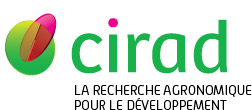Sroy Sengly, Servent Adrien, Sriwichai Wichien, In Sokneang, Avallone Sylvie. 2023. Use of an experimental design to optimise the saponification reaction and the quantification of vitamins A1 and A2 in whole fish. International Journal for Vitamin and Nutrition Research, 93 (4) : 298-307.
|
Version publiée
- Anglais
Accès réservé aux personnels Cirad Utilisation soumise à autorisation de l'auteur ou du Cirad. 607092.pdf Télécharger (1MB) | Demander une copie |
||
|
Version post-print
- Anglais
Utilisation soumise à autorisation de l'auteur ou du Cirad. 607092_preprint.pdf Télécharger (1MB) | Prévisualisation |
Résumé : In ASEAN countries, small freshwater fish species contribute to the nutritional needs of people with few livelihoods by providing them with significant amounts of protein, fat, vitamins and minerals. Some species are eaten whole (with their organs, skin, bones, head and eyes). To estimate the vitamin A content of these foods, conventional saponification has been applied but has not been able to fully release the retinol. Our objective was to optimise the conditions of vitamin A saponification in whole fish to have a reliable estimate of their contribution to intakes. The effects of temperature and saponification time on the retinol quantification of whole fish were evaluated using a two-factor experimental design. Reaction time had a significant effect on the saponification of standard retinyl palmitate and whole fish (p≤0.05). For whole fish, the best conditions for the saponification were to heat the samples to 80 °C for 43 minutes. Under these conditions, the retinol is well liberated from the matrix and protected from degradation and isomerisation reactions. The time-temperature couple used is more intense than that recommended for quantifying vitamin A in milk or enriched margarines. The protective effect of the food matrix against the release of retinol is evident. Vitamin A2 alcohol (3,4-didehydroretinol) was detected in five species and the overall vitamin A contents ranged from 9.6 to 737.5 μg RE/100 g in species frequently consumed in Cambodia. The two species of small fish consumed whole were the ones that contained significantly more vitamin A among the ten tested (p≤0.05). Highlights: Vitamin A2 alcohol was quantified in five fish species. The official saponification partially released retinol in whole fish. The optimised reaction required heating the sample to 80 °C for 43 min.
Mots-clés Agrovoc : poisson d'eau douce, teneur en vitamines, saponification, acide ascorbique, rétinol, vitamine E
Mots-clés géographiques Agrovoc : Cambodge
Mots-clés libres : Matrix effect, Small fresh water fish, Temperature, Time, Response surface methodology
Classification Agris : Q04 - Composition des produits alimentaires
Q02 - Traitement et conservation des produits alimentaires
Champ stratégique Cirad : CTS 3 (2019-) - Systèmes alimentaires
Auteurs et affiliations
- Sroy Sengly, CIRAD-PERSYST-UMR Qualisud (FRA)
-
Servent Adrien, CIRAD-PERSYST-UMR Qualisud (FRA)
 ORCID: 0000-0002-9670-6707
ORCID: 0000-0002-9670-6707
- Sriwichai Wichien, CIRAD-PERSYST-UMR Qualisud (FRA)
- In Sokneang, Institut de technologie du Cambodge (KHM)
- Avallone Sylvie, Institut Agro Montpellier (FRA) - auteur correspondant
Source : Cirad-Agritrop (https://agritrop.cirad.fr/607092/)
[ Page générée et mise en cache le 2025-08-01 ]




